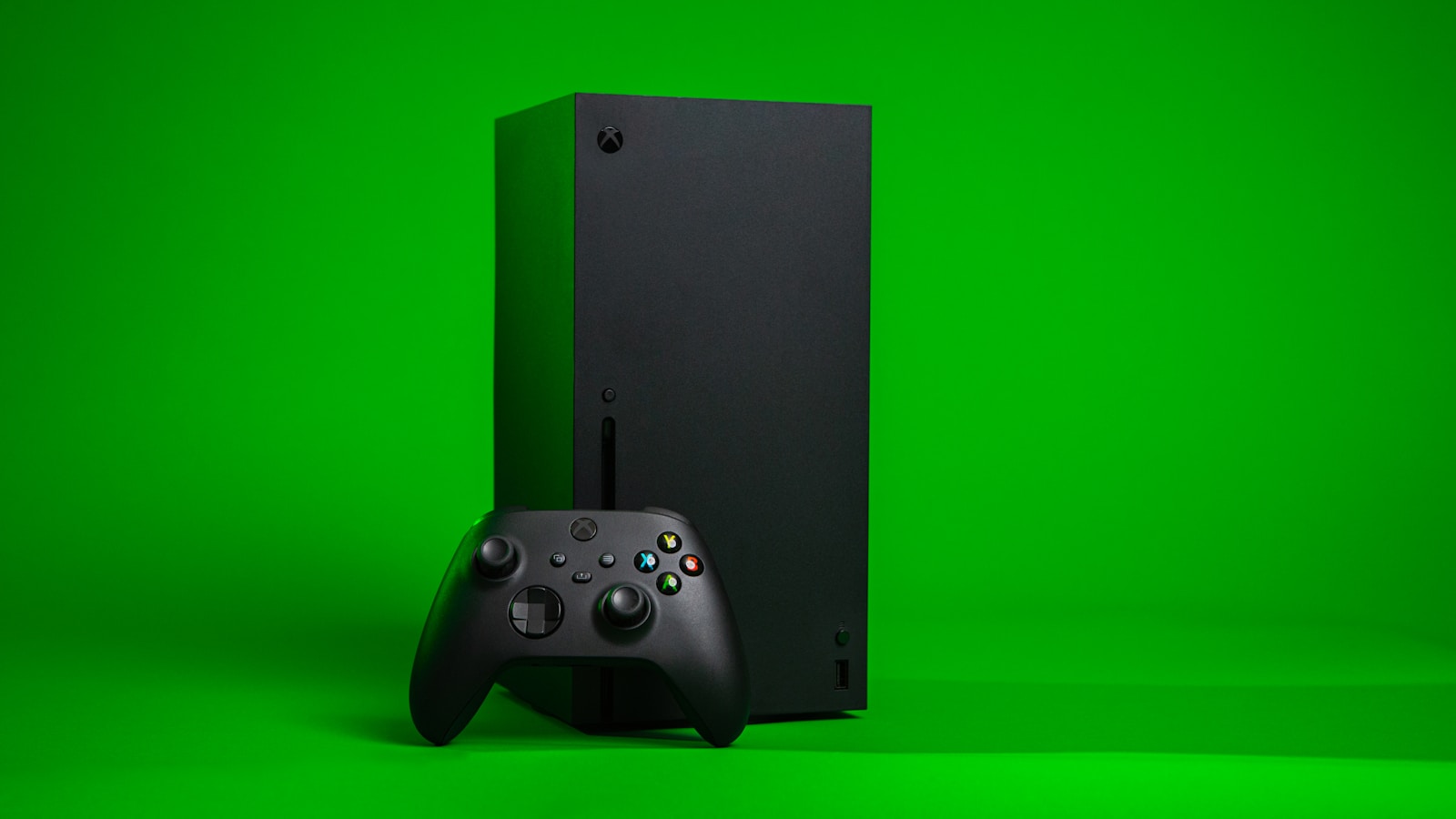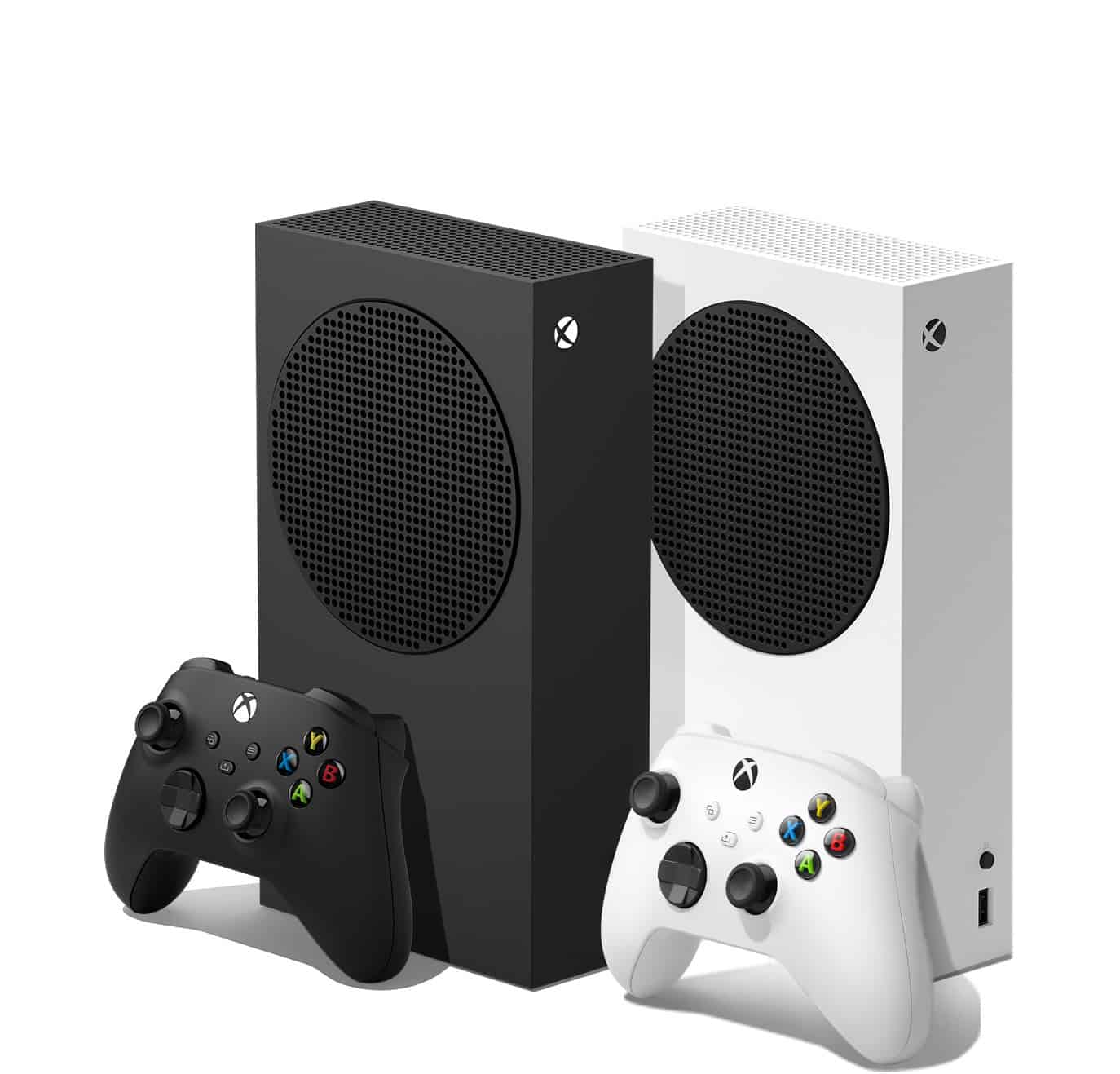Buying an Xbox in 2025 isn’t quite as simple as picking the “big one” or the “small one.” Both the Series X and Series S have matured since their 2020 launch, prices have shifted, storage options have multiplied, and Microsoft is teasing VR and next-gen hardware on the horizon. Below is a fresh, 2025-ready comparison that cuts through the marketing and highlights the factors that actually matter before you spend your money.
| Xbox Series X | Xbox Series S (512 GB / 1 TB) | |
|---|---|---|
| Target resolution | Native 4K at 60–120 fps, ray tracing on most AAA titles | 1440p (often upscaled to 4K) at 60–120 fps |
| GPU horsepower | ~12 TFLOPs RDNA 2 | ~4 TFLOPs RDNA 2 |
| Internal storage | 1 TB NVMe SSD | 512 GB or 1 TB NVMe SSD |
| Disc drive | 4K UHD Blu-ray | None (digital-only) |
| Footprint / weight | 301 × 151 × 151 mm / 9.8 lb | 275 × 151 × 65 mm / 4.25 lb |
| Typical street price* | $599 (was $499) | $380 / $430 (was $299 / $349) |
| Ideal display | 4K HDR TV or monitor with HDMI 2.1 | 1080p–1440p screen; HDMI 2.1 still useful for 120 Hz |
*U.S. MSRP after the May 2025 price hike. Retail promotions occasionally dip lower.

1. Price & Bundles in 2025
- Price hikes are real. In May, Microsoft raised the base price of both consoles by $80-$100. Retailers like Walmart and Dell still run flash sales that roll those increases back, but expect limited stock.
- Game pricing is following suit. First-party titles now launch at $79.99, making Game Pass Ultimate’s library an even stronger value proposition—especially on the cheaper Series S.
- Bundles matter. Many Series X packages now include a 1-month Game Pass code and a first-party game to soften the higher MSRP. The 1 TB “Carbon Black” Series S often comes with an extra controller or store credit.
2. Raw Performance & Visual Fidelity
Series X is still the brute-force option. It renders true 4K textures, holds 60–120 fps more consistently, and keeps ray tracing enabled on demanding 2025 games like Avowed and Starfield: Shattered Frontiers. Series S relies on resolution-scaling techniques such as AMD FSR 3 to hit similar frame-rates, and recent patches have narrowed—but not closed—the gap in texture quality and draw distance. If you own a 4K OLED or a fast 1440p monitor, you will notice the difference.
3. Storage: Today’s Bottleneck
- Internal SSD: 1 TB on Series X, 512 GB or 1 TB on Series S. Modern AAA installs can top 150 GB, so even the bigger drive fills quickly.
- Expansion cards are cheaper. Third-party 1 TB cards from Western Digital and Seagate now dip below $125 during sales—half what Microsoft’s proprietary cards cost at launch.
- USB 3.2 drives work too. You can archive Series X/S games to an external SSD/HDD and copy them back when needed, but next-gen titles must run from the internal or expansion NVMe to enable features like Quick Resume.
4. Disc Drive vs. Digital-Only
A disc slot on the Series X serves three purposes in 2025: playing 4K Blu-ray movies, accessing the used-game market, and installing large games without massive downloads. If you already built a digital library on Xbox One or rely exclusively on Game Pass, the Series S’s lack of a drive won’t sting. If you like physical collector’s editions or living-room movie nights, factor the UHD drive into your budget.
5. Size, Noise & Power Draw
The Series S’s slim, router-like chassis fits dorm rooms and bookshelves with ease and sips roughly 70–90 W under load. Series X draws closer to 200 W, though a late-2024 motherboard refresh trimmed idle consumption by 15 %. The larger tower also runs a touch quieter thanks to a 130 mm fan, whereas the Series S’s smaller blower can be heard in quiet rooms when it ramps up.
6. Future-Proofing & New Hardware Rumors
- VR on the horizon: Microsoft’s collaboration with Meta has produced the Xbox-branded Quest 3 S headset, slated for mid-2025. Both Series X and S will stream VR titles, but early dev kits suggest the higher GPU ceiling of Series X will unlock better visuals and higher refresh rates.
- Next-gen roadmap: Microsoft and AMD confirmed a multi-year silicon partnership, hinting at new consoles (and possibly a handheld) by late 2026-early 2027. Expect cross-generation support through at least 2029, so buying an X or S today should still give you a full cycle of new releases.
- Feature parity: Both systems support Dolby Vision gaming, Auto HDR, Variable Refresh Rate, and Quick Resume. Accessory compatibility—including the new low-latency Aurora controller—remains identical.
7. Which One Should You Buy?
Pick the Series X if you:
- Own (or plan to buy) a 4K 120 Hz display.
- Value physical games or a 4K Blu-ray collection.
- Want the best visual fidelity for flagship titles and the most headroom for future VR support.
Pick the Series S if you:
- Game primarily through Game Pass and digital storefronts.
- Play on a 1080p/1440p screen and prefer a compact console.
- Need the lowest upfront cost—especially when a sale drops it back under $350.
Whichever route you choose, remember to budget for storage expansion and keep an eye on limited-time bundles. In 2025’s market, timing your purchase can save as much as the price difference between the two consoles.
Series X vs Series S: Comparison Table
Here’s a table comparing the Xbox Series X and Xbox Series S:
| Feature | Xbox Series X | Xbox Series S |
| Target Resolution | True 4K (2160p) | 1440p (upscaled to 4K) |
| GPU Power | 12 TFLOPS | 4 TFLOPS |
| RAM | 16 GB GDDR6 | 10 GB GDDR6 |
| Internal Storage | 1 TB Custom NVMe SSD (also 2TB option) | 512 GB Custom NVMe SSD (also 1TB option) |
| Disc Drive | Yes (4K UHD Blu-ray drive) | No (All-digital) |
| Size | Larger, more powerful design | Smaller, more compact design |
| Price (MSRP) | Higher | Lower |
| Ideal User | Enthusiast gamers, 4K TV owners, physical media users | Casual gamers, 1080p/1440p TV owners, budget-conscious, digital-only gamers |
Key Differences Explained:
- Resolution and Power: The Series X is designed for native 4K gaming, delivering sharper visuals and generally better performance. The Series S targets 1440p, but can upscale to 4K, which still looks good on a 4K TV, just not as crisp as native 4K.
- Disc Drive: This is a major differentiator. The Series X includes a 4K Blu-ray drive, allowing you to play physical game discs and 4K movies. The Series S is entirely digital, meaning all games must be downloaded.
- Storage: The Series X comes with a larger SSD, which is beneficial given the increasing file sizes of modern games. While the Series S also has an SSD, its smaller capacity might require more frequent game management or the purchase of an expansion card.
- Price: The Series S is significantly more affordable, making it a great entry point into the current generation of Xbox gaming.
Both consoles share features like the Xbox Velocity Architecture (for fast loading), Quick Resume, DirectX Raytracing, Variable Rate Shading, Spatial Sound, and Smart Delivery, ensuring a seamless next-gen gaming experience across both. The choice between them ultimately depends on your budget, your display setup, and whether you prefer physical or digital games.
Key Takeaways
- Xbox Series X offers 4K gaming, a disc drive, and 1TB storage, while Series S is digital-only with 512GB storage and targets lower resolutions.
- The Series S costs significantly less than the Series X, making it an excellent budget-friendly option for next-gen gaming.
- Both consoles play the same games and offer similar features, but differ in performance capabilities and physical vs. digital media support.
Comparing Xbox Series X and Xbox Series S
Microsoft offers two console options in their current generation lineup with significant differences in design, performance, and price. These differences help gamers choose the best system for their needs and budget.
Design and Build
The Xbox Series X and Series S have distinctly different physical designs. The Series X features a tower-like structure with a black exterior that resembles a small PC tower. It stands 30.1 cm tall and weighs 4.45 kg, making it substantially larger and heavier than its counterpart.
The Series S, on the other hand, adopts a much smaller form factor with a white exterior and a distinctive black circular vent on top. At just 27.5 cm wide, 6.5 cm tall, and 2.5 kg, it’s the smallest Xbox console Microsoft has ever produced.
One major design difference is that the Series S lacks a disc drive, meaning it can only play digital games. The Series X includes a 4K UHD Blu-ray drive, allowing players to use physical game discs and watch Blu-ray movies.
Gaming Performance
The performance gap between these consoles is reflected in their technical specifications and capabilities. The Series X contains a more powerful custom AMD RDNA 2 GPU with 12 TFLOPS of processing power compared to the Series S with 4 TFLOPS.
Both consoles feature 8-core AMD Zen 2 CPUs, but the Series X runs at a slightly higher clock speed. The Series X also comes with 16GB of RAM versus 10GB in the Series S, allowing for better handling of higher resolution textures and more complex game assets.
Storage capacity differs significantly too. The Series X includes a 1TB custom SSD while the Series S ships with a 512GB SSD. This means Series S owners may need to manage their game library more carefully or purchase expandable storage.
Resolution and Framerate
Resolution capabilities represent one of the biggest differences between these consoles. The Series X targets native 4K gaming (3840×2160) while the Series S aims for 1440p resolution, though many games run at 1080p on the Series S.
Both consoles support up to 120 fps gameplay in compatible games, though the Series X can maintain higher framerates more consistently at higher resolutions. Many games offer performance modes that prioritize framerates (60-120 fps) or quality modes that favor resolution and visual effects.
The Series X better serves gamers with 4K TVs who want the best visual experience. The Series S still delivers excellent performance, particularly on 1080p displays, making it an ideal choice for casual gamers or those with budget constraints.
Technical Specifications
The Xbox Series X and Series S differ significantly in their technical specifications, which directly impacts performance, visual quality, and gaming experience. These differences extend from processing power to storage capabilities.
Storage Solutions
Both Xbox Series consoles use NVMe SSD technology, offering faster loading times compared to previous generations. The Series X comes with a 1TB internal SSD, while the Series S includes a smaller 512GB drive. This storage difference is significant, especially considering modern games can require 50-100GB each.
Both consoles support storage expansion through the proprietary Seagate Storage Expansion Card, which plugs into a dedicated port on the back. This card maintains the speed benefits of the internal SSD.
Users can also connect external USB drives for additional storage. However, Xbox Series X|S optimized games must be installed on either the internal SSD or expansion card to enjoy their enhanced features.
Graphic and Processing Capabilities
The Xbox Series X features significantly more powerful hardware than the Series S:
| Specification | Xbox Series X | Xbox Series S |
|---|---|---|
| GPU Power | 12 TFLOPS | 4 TFLOPS |
| RAM | 16GB GDDR6 | 10GB GDDR6 |
| Resolution Target | 4K (up to 8K) | 1440p (up to 4K upscaled) |
| CPU | 8-core AMD Zen 2 at 3.8GHz | 8-core AMD Zen 2 at 3.6GHz |
| GPU Architecture | AMD RDNA 2 | AMD RDNA 2 |
Both consoles use the same AMD Zen 2 CPU architecture, though the Series X runs at a slightly higher clock speed. The Series X delivers true 4K gaming while the Series S targets 1440p resolution, often upscaled to 4K.
The extra RAM and GPU power in the Series X enables it to maintain higher framerates in demanding games, with many titles supporting 60-120 fps gameplay.
User Experience and Features
Both Xbox Series consoles deliver next-gen gaming experiences with fast load times and smooth gameplay, but they differ in several key areas that affect how users interact with their systems.
Media Capabilities
The Xbox Series X includes a 4K UHD Blu-ray disc drive, making it a complete entertainment center for physical media enthusiasts. This allows users to play Blu-ray movies in stunning 4K resolution and also install physical game copies.
The Series S, being digital-only, lacks a disc drive completely. This means all games and media must be downloaded or streamed through services like Netflix, Disney+, or HBO Max.
Both consoles support 4K streaming from services like Netflix and Disney+, though the Series X offers native 4K output for all content while the Series S typically upscales from lower resolutions.
Backward Compatibility and Game Library
Both Xbox Series consoles feature impressive backward compatibility with thousands of games from previous Xbox generations. The Series X can play physical copies of backward compatible Xbox One, Xbox 360, and original Xbox games.
The Series S, without a disc drive, can only play digital versions of backward compatible titles that users own or purchase through the Microsoft Store.
Xbox Game Pass enhances both systems significantly, offering a subscription service with hundreds of games. This service particularly benefits Series S owners who rely entirely on digital content.
Some backward compatible games receive automatic enhancements on both systems, including improved framerates and faster loading times. The Series X often delivers these enhancements at higher resolutions than the Series S due to its more powerful hardware.
Cost of Ownership
Buying an Xbox is just the beginning of your gaming journey. The true investment includes additional costs that impact your long-term budget and gaming experience.
Price Point and Value
The Xbox Series X retails for $500, while the Series S comes in at a more affordable $300. This $200 difference is significant for budget-conscious gamers. However, the initial purchase price doesn’t tell the complete story.
Game Pass subscription adds approximately $10-15 monthly to your gaming budget. While this service provides access to hundreds of games, remember that titles regularly leave the service, potentially forcing you to purchase games you’ve grown attached to.
Storage capacity presents another hidden cost. The Series S comes with only 512GB of storage compared to the Series X’s 1TB. With modern games often exceeding 100GB, the smaller drive fills quickly.
Upgrading and Maintenance
External storage expansion becomes almost inevitable for serious gamers. The official Seagate Storage Expansion Card costs around $220 for 1TB, nearly the price of the Series S console itself.
Additional controllers run about $60-70 each. Investing in rechargeable battery packs ($25) saves money over time compared to disposable batteries.
Network requirements should also be considered. Online gaming demands a reliable internet connection, which might mean upgrading your service.
The Series X’s superior hardware may provide better longevity as games become more demanding over the console’s lifecycle. This could delay the need for future upgrades compared to the Series S.
Frequently Asked Questions
Choosing between the Xbox Series X and Series S involves understanding key differences in hardware capabilities, performance, and value. Here are answers to common questions that will help you decide which console is right for you.
What are the differences in technical specifications between the Xbox Series X and Series S?
The Xbox Series X has significantly more powerful hardware than the Series S. It comes with 12 teraflops of GPU performance compared to the Series S’s 4 teraflops.
The Series X includes 16GB of RAM while the Series S has 10GB. Storage is another major difference, with the Series X offering 1TB of internal storage versus the 512GB in the Series S.
The Series X also includes a disc drive, while the Series S is digital-only with no disc drive.
How do the graphics capabilities compare between the Xbox Series X and Series S?
The Series X is designed for 4K gaming at up to 120fps in supported games. It can consistently hit 4K resolution, though often at 30fps for graphically demanding titles.
The Series S targets 1440p resolution (though it can output at 4K for streaming apps). Many games run at 1080p on the Series S with frame rates between 30-60fps depending on the title.
Visual effects, texture quality, and draw distances are typically better on the Series X due to its additional processing power.
Which Xbox Series console offers better value for gamers on a budget?
The Xbox Series S is the clear budget option at nearly half the price of the Series X. For gamers who don’t need 4K gaming or physical discs, it offers excellent value.
The Series S provides access to the same game library and Xbox Game Pass service as the more expensive model. This makes it an attractive entry point to next-gen gaming.
However, the smaller storage and digital-only format mean you’ll need to manage game installations carefully or purchase external storage.
What is the performance difference in gameplay between the Xbox Series X and S?
In real-world gameplay, the Series X delivers more consistent performance with higher resolutions and smoother frame rates. Load times are similar between both consoles thanks to their SSD technology.
The Series X handles graphically intensive games with less compromise. Games on Series S often run at lower resolutions or with reduced visual effects to maintain performance.
Most gamers will notice the difference primarily when playing on larger 4K displays, where the resolution gap becomes more apparent.
Can you play all the same games on both the Xbox Series X and Series S?
Yes, both consoles play the same games from the Xbox Series X|S library. There are no Series X exclusives that won’t run on Series S.
Both consoles also support backward compatibility with thousands of Xbox One, Xbox 360, and original Xbox games. The difference is that the Series S can only play digital versions of these titles.
Some older games receive performance boosts on both systems, though the enhancements are typically more substantial on Series X.
How does the Xbox Series S’s 1TB storage option affect its usability compared to the Xbox Series X?
The standard Series S comes with 512GB storage, not 1TB. This smaller storage capacity means you’ll fit fewer games on the system at once compared to the Series X.
Modern games can take up 50-100GB each, so the usable space (around 364GB after system files) on the Series S fills up quickly. Users often need to uninstall games or add external storage.
Both consoles support storage expansion via the Seagate Storage Expansion Card, but this adds significant cost to the Series S, reducing its price advantage over the Series X.







